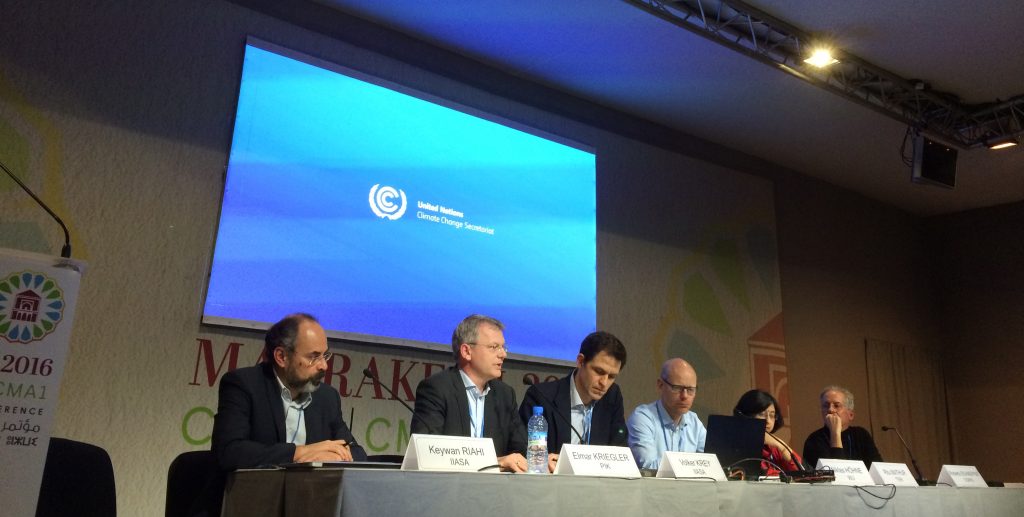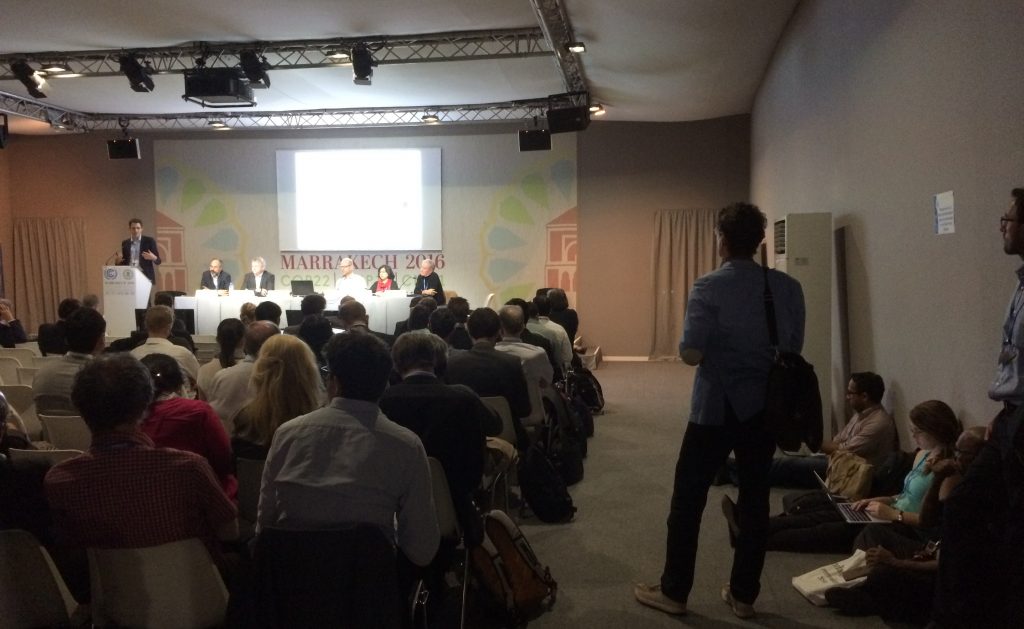Discussion on development pathways for a well below the 2°C target in CD-LINKS’ COP22 side-event
23 November 2016
The CD-LINKS project organized a side-event on 17 November 2016 at the UN climate change conference, COP22, to present research related to the development of national roadmaps consistent with the global target of 1.5 and 2C and their implications for sustainable development. There was a specific focus on India and Brazil, who presented their specific low carbon pathways, and on presenting initial global results on the inter-linkage between climate mitigation and other sustainable development objectives.

CD-LINKS side-event at COP22 in Marrakech, Morocco. From left: Keywan Riahi – IIASA, Elmar Kriegler – PIK, Volker Krey – IIASA, Niklas Höhne – WU, Ritu Mathur – TERI and Roberto Schaeffer – COPPE. 17 November 2016 © Johanna Zilliacus
The presentations of this side-event emphasised the importance of ratcheting up the NDCs, as the gap to 1.5 or 2C is still significant. Furthermore, based on a policy analysis of current and planned national policies, it is clear that these are not stringent enough for reaching the NDCs, not to even mention the 1.5° or 2°C targets.
On the other hand, mitigating greenhouse gas emissions has an impact on the attainment of other, non-climate, sustainable development goals, such as food security, water availability and air quality-related health. The project’s results show that mitigation of emissions has clear co-benefits through positive health impacts due to air pollutant emissions reductions. Nonetheless, climate mitigation may have severe impacts on food security and water scarcity. However, these negative impacts can be avoided through well-planned policies that counteract the potential negative impacts on mitigation policies. Therefore it is important for policy makers to have information on the implications of their decisions on a wide array of sustainable development issues, and how to take corrective action to counteract any potential negative side effects.
Some of the challenges of staying within the budget boundaries were discussed, and showcased by country-level presentations of the pathways in India and Brazil for low carbon development.
During the side-event, an interesting discussion between the presenters and the public, consisting of around 80 COP22 participants, took place. For example, the challenge of finding a balance between meeting the requirements for keeping the global average temperature well below 2C, as stated in the Paris Agreement, and of meeting the development needs of the individual countries was brought up. The risk of carbon lock-in is a central issue, together with the price development of low carbon technologies and their affordability in countries such as India in a larger scale.
You can watch the full recording of the event on UNFCCC’s YouTube channel. The agenda of the event is available here.

CD-LINKS side-event at COP22 in Marrakech, Morocco. 17 November 2016 © Johanna Zilliacus
